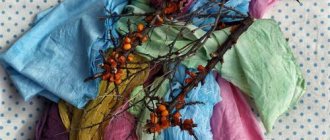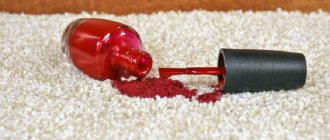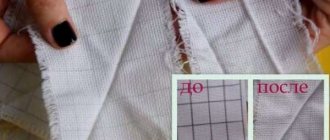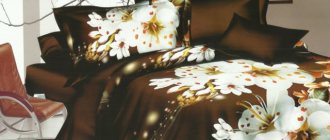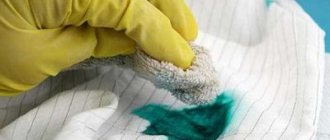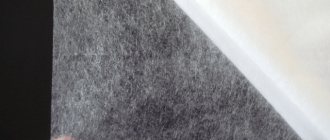Painting on fabric is a fascinating activity that remains a very popular type of needlework today. Manufacturers offer a wide range of fabric dyes - from traditional to innovative. Our article will help you understand the most popular types and decide on the choice of paint to achieve the best result.
Painting fabric with acrylic paints: pros and cons
Acrylic is the best polymer dye for clothing. When painting, pigments do not seep into the fibers, but remain on the surface, forming a film. The painted surface of the fabric becomes denser and becomes less elastic. Acrylic paint allows you to create bright, multi-colored, water-resistant images on clothing. The palette is rich, colors can be mixed to create additional shades.
Acrylic fabric paints are subject to high safety requirements. They are made from environmentally friendly components that are odorless and do not cause an allergic reaction.
Acrylic is an ideal option for beginning craftswomen.
Advantages and disadvantages
environmental safety, harmlessness to health;
safe components in the composition - pigments, water, natural or synthetic resins, plasticizers;
ease of use;
easy-to-apply texture;
quick drying with the formation of a protective surface film;
Possibility of diluting with water, mixing paints to obtain many shades;
waterproof coating that can withstand repeated washings;
wide range, constant availability in stores.
over time, acrylic loses its quality characteristics, so the paint will have to be thrown away after the expiration date;
The fabric requires the application of enclosing contours, since water-based paint is fluid.
Material selection
For re-dying and painting, natural materials are considered the most suitable - linen, wool, cotton fabrics, natural silk. Also, very good results are obtained when working with textiles containing no more than 60% synthetic fibers. The color applies beautifully and evenly to such materials. The problem of tinting completely artificial fabrics was solved by Jacquard iDye Poly paint, the use of which makes it possible to remove restrictions on the requirements for the composition of textiles.
What fabric is suitable
Acrylic coating is not afraid of moisture; you can paint any wardrobe items and fabric accessories: jeans, T-shirt, bag, jacket, umbrella, raincoat, scarf. You can also make wonderful panels to decorate walls, napkins and tablecloths for the festive table.
You cannot paint with acrylic paint only:
- bedding (due to frequent washing, the color will quickly fade);
- underwear (constant friction against the skin can provoke an allergic reaction);
- things that have to be dry cleaned;
- clothes for babies and children of younger kindergarten age (paint may be an allergen for a fragile child’s body).
When choosing paint, take into account the type of fabric. To do this, look at the markings on the container with the dye:
- “Silk” - this inscription on the jar indicates that the dyed fabric is not particularly compacted, so even thin things can be dyed: silk, cambric, chiffon.
- “Textile” – the label indicates that the paint is optimal for thick fabric. It can be used to paint furniture fabrics, even leather and suede products.
See also
Top 12 types of aerosol paints in cans for decoration and how to use
How to take better care
The quality of painting at home differs from that in a factory, so more careful care of clothes is required.
Tips on how to keep your coloring longer
- The first few washes should be carried out separately, as the paint may come off intensively;
- Use washing powder for colored items;
- Wardrobe parts painted with acrylic paints should be washed by hand at a temperature not exceeding 40⁰C;
- Rinse after washing to fix the color separately by adding vinegar to the water;
- Dry in the shade (the product will fade when exposed to sunlight).
Modern ideas for dyeing clothes allow you to create new creative images of your favorite things at home. A little imagination, desire and creative experimentation will delight you with its interesting results.
Preparatory steps before drawing
Acrylic paint should be applied to clean fabric, so before painting, clothes must be thoroughly washed, kept in cold water for about an hour, dried thoroughly, and ironed. It is better to hang silk or other thin fabric in a straightened state on the crossbar and leave it until completely dry.
When performing some dyeing techniques, craftswomen use a hoop or a self-made frame. But usually there is no need to stretch the material too much; lying on a flat and hard horizontal surface, it will paint well. Paint with acrylic in a well-lit room.
Expert opinion
Zakharova Irina Yurievna
Cleaning professional with 15 years of experience. Our best expert.
Ask a Question
When dyeing a T-shirt or other two-layer garment, place cardboard between the front and back surfaces to prevent the dye from staining the back side.
When painting fabric, it is important to choose the right acrylic dye. Paints are available for light and dark fabric bases. If the canvas is dark, then before applying acrylic it is advisable to apply a light primer.
Acrylic paints are sold in jars, cylinders, and tubes. The most popular products are from manufacturers Decola, Marabu, Dylon, Simplicol. The products include, in addition to the paints themselves, auxiliary materials:
- brushes;
- solvents for adjusting the density of the dye;
- fabric pencils;
- compositions for creating contours;
- stencils.
Acrylic painting technology
Painting fabric with acrylic paint is batik. The uniqueness of the painting is that a fixing composition is used to obtain a limiting contour at the junction of two pigments.
The basis for dissolving acrylic paint is water, but many artists prefer to use special solvents. When using water, the image is matte; when using solvent, it is glossy. To fix the pigment, you need to walk over the dried canvas with an iron.
Hot batik
The hot batik method is used to dye natural dense fabrics: linen, cotton, jeans, viscose. To obtain a multi-color image with clear contours, melted wax is used. Under the wax lines applied to the fabric, white or another original color of the material remains.
To apply wax, you should use a chanting tool - a pen with a small vessel and a writing spout. Before starting work, you need to melt the wax.
For a beginner, you can take a wax candle for training. Experienced craftsmen make the material themselves - from paraffin, fat, dammar, beeswax, pine resin.
See also
4 methods and rules for painting glass wallpaper, what compositions are suitable
Work algorithm:
- Select an image. Transfer it onto fabric using tracing paper or another method.
- Cover the areas of the picture that should not be touched by paint with melted wax. Leave until completely dry.
- Paint the canvas with acrylic dye. Wait for it to dry.
- Remove the wax coating using paper, heating the fabric through it, carefully peeling off the mixture.
- If necessary, cover other areas with wax, and paint the canvas again with a different color.
Cold batik
The method differs from hot batik by using not wax, but a special composition called reserving. Therefore, the technique is called redundancy in another way.
The work algorithm is generally similar: coat the required areas of the fabric with a paint-impermeable composition, then paint the free part of the fabric. After the acrylic coating has dried, remove the backup contours. The result will be a multi-color image with clear outlines. Cold technique is optimal for creating stencil designs.
Knot batik
The technique allows you to create original abstract patterns with unusual color transitions. Optimal for creating original T-shirts, sundresses, tablecloths, napkins. Easy to perform, recommended for beginners.
Start by twisting small knots in the fabric. Next you need to paint as follows:
- Paint over the background if necessary. Dry the product.
- Place small pebbles or buttons in random places on the canvas. Twist into knots.
- Fold the fabric itself into several layers, twist it randomly, and tie it with thread to form a tight lump.
- Immerse in a container of paint and hold for a while.
- Take it out, dry it, straighten it.
Free painting
The technique is suitable for experienced craftsmen with artistic abilities. This is the usual creation of a picture without the use of stencils. An artist can draw any image, showing maximum imagination and skills.
To prevent acrylic paint from spreading, the fabric must be immersed in a saline solution for 2 hours. It is permissible to use a reserve substance; in its absence, a primer is required. To make it, mix PVA glue, starch and gelatin in equal proportions, apply it with a brush to the area to be painted, and wait until it dries completely.
Freehand painting is wet when acrylic paint is placed on wet fabric without using a stencil. The colors mix and flow into each other, resulting in a blurry, airy image reminiscent of watercolors.
Airbrush
This acrylic painting technique also requires artistic skills. To paint fabric, you need to purchase an airbrush - a special type of spray gun for comfortable distribution of paint at a distance of 20-30 cm from the canvas. By moving the device closer and further away, changing the spray angle, you can create interesting effects and different shades.
See also
Composition and properties of rubber paints, rating of the best paints and consumption calculator
Shibori technique
Japanese technique is a type of knot technique. Only the fabric is not tied in knots, but twisted and folded in different ways, similar to the principle of folding paper origami. The master does not know what the drawing will be like until he unrolls the dried canvas.
Interesting ideas for original works
Anyone can create beautiful paintings with acrylic paints. Even a child can be taught to dye fabric: he will have something to do without distracting his mother from household chores. Creating acrylic paintings is an extremely exciting activity; you only need to try it once to become seriously interested. Fortunately, there are plenty of ideas.
Create fashionable clothes and accessories for the whole family with your own hands and decorate the interior. Curtains painted with acrylic, decorative pillows for sofas, wall panels, tablecloths, and interior curtains look great.
Mix batik techniques. For example, complement the stencil technique with an airbrush, working with it at a distance: you will get beautiful splashes. Decorate finished paintings with beads, seed beads, sparkles, and decorative stones. For clothes of a certain style, choose suitable designs: ethnic ornaments, mandalas, religious symbols.
Ideas: what things can be painted
Traditionally, silk scarves, stoles, shawls and dresses were decorated using the batik technique. Since the art originated in Indonesia, its native motifs are flowers, plants, birds and landscapes.
For a “test of the pen”, you can take a plain cotton T-shirt and design it using the shibori technique - you will get a bright summer design in the form of a spiral with diverging rays. A frame from your favorite cartoon would look good on a children's sweatshirt - such drawings have a clear outline and large shapes, they will be easy to work with.
After practicing on small items, you can paint a decorative pillowcase or bedspread for the bedroom, wall panel, tablecloth or curtain. The color and motifs of the work will depend on the style of your interior.
If you look for outline drawings for batik on the Internet, you can safely add to them templates for stained glass painting - these techniques have a similar principle.
We wish you successful experiments!

